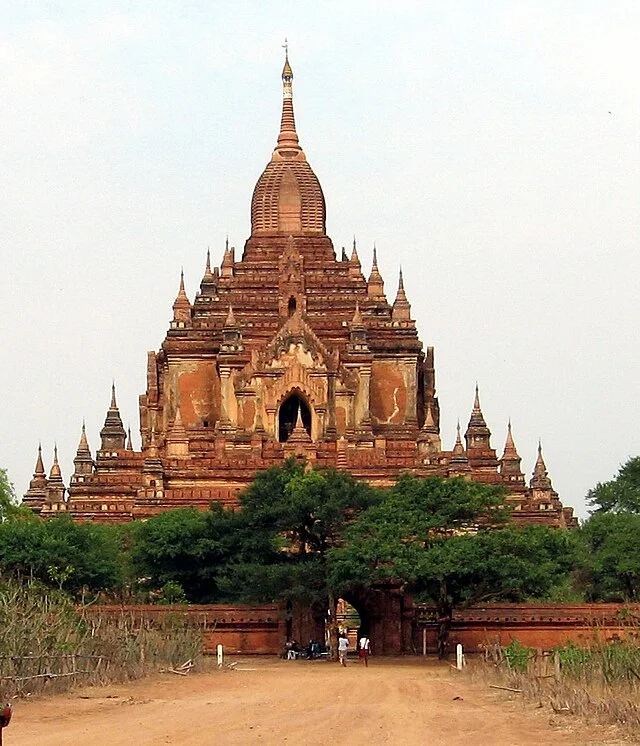The Sulamani Temple is one of the most significant monuments of ancient Burma (modern-day Myanmar). It is located in the archaeological zone of Bagan, a city that once served as the capital of the Pagan Kingdom from the 11th to the 13th centuries. Constructed during the reign of King Kyansittha in AD 1183, the Sulamani Temple stands as a testament to the architectural achievements of this period.
Get your dose of History via Email
Architectural Features

The Sulamani Temple is an example of the peak of Bagan’s temple architecture. The building is primarily made of brick, with the walls and roof structures elaborately decorated with intricate carvings. The temple follows the typical design of a Burmese pagoda, with a central stupa surrounded by smaller shrines. It is a three-story structure, with a large main hall and several smaller chambers.
One of the most striking features of the Sulamani Temple is its symmetry. The temple is meticulously planned, with a central dome that rises above the surrounding structures. The roof is adorned with various decorative elements, including a gilded umbrella known as a “hti,” which was commonly used to crown Burmese temples during this period. The stupa is flanked by two rows of smaller, square-shaped pagodas.
Historical Significance

Sulamani Temple was built to honor the Buddha and the teachings of Theravada Buddhism. King Kyansittha’s reign saw significant cultural and religious developments, and the construction of temples like Sulamani helped to solidify Bagan’s status as a center of Buddhism in Southeast Asia. During this period, Bagan became home to thousands of temples, monasteries, and pagodas, which were built to commemorate the Buddha’s life and teachings.
The temple is named “Sulamani,” which means “jewel” in Burmese, a reference to its grandeur and importance. It is said that King Kyansittha sought to build a temple that would surpass all others in beauty and size. Sulamani Temple, with its careful design and spiritual significance, epitomizes the religious fervor of the time.
Artistic and Iconographic Elements

Inside the Sulamani Temple, visitors can find numerous murals and statues depicting scenes from the life of the Buddha. These artworks illustrate key moments such as the Buddha’s enlightenment, his teachings, and his death. The murals are painted with bright colors and intricate details, showcasing the mastery of Bagan’s artists during this period.
The temple’s iconography reflects both local and regional influences. While predominantly in line with Theravada Buddhist traditions, the Sulamani Temple also shows some influence from neighboring cultures. This is especially evident in the artistic style and the layout of the temple.
Restoration and Preservation

Over the centuries, the Sulamani Temple has undergone several restoration projects, particularly following the devastating earthquake that struck the Bagan region in 1975. This earthquake caused significant damage to many of Bagan’s temples, including Sulamani. In the years since, efforts have been made to restore and preserve the temple, though it remains vulnerable to natural disasters and the passage of time.
The temple is currently under the protection of the Myanmar government, and there are ongoing conservation projects aimed at preserving its structural integrity. Despite challenges, Sulamani Temple remains a symbol of Bagan’s rich cultural heritage.
Conclusion
The Sulamani Temple is an enduring symbol of Bagan’s religious and architectural heritage. Built during the height of the Pagan Kingdom, it represents both the spiritual devotion of the Burmese people and the artistic achievements of the time. As one of the most important temples in the Bagan Archaeological Zone, the Sulamani Temple continues to attract visitors and scholars alike, contributing to the ongoing appreciation of Myanmar’s historical and cultural legacy.
Source:

